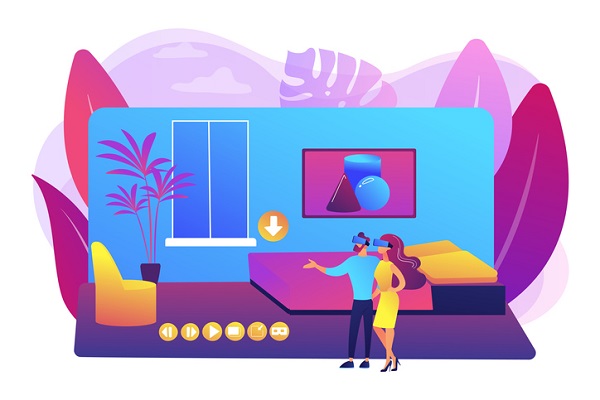Virtual real estate: 5 steps to successful virtual home tours
Virtual home tours could make selling realty a reality for real estate agents, even during the COVID-19 pandemic. You likely use photos and video to give your Buyers the best look at a home already. And you know how to stage and market your listings. A virtual home tour simply ties your expertise together into a neat, virtual package that people can consume from home. Here are 5 steps you can take to make your next virtual home tours a success, if your state allows you to enter and film your listings.
Update and stage the home first
The first step to a successful virtual tour is to update and stage the listing properly. In this way, virtual tours are quite similar to in-person tours. However, you may need to go the extra mile to assure that the home looks as good as possible for virtual Buyers.
Be sure that you and your Sellers have completed all painting, landscaping and cleaning necessary. All states still consider building-materials suppliers, such as hardware stores, essential businesses. So, there’s still an excellent opportunity to update aspects of the house to make it look as good as possible.
You’ll also want to reduce clutter as much as possible. Be sure that things like garbage bins and personal items stay out of your shots and videos as much as possible.
Finally, make sure that you highlight the best features of the house. For example, if it has outdoor space, film it on a beautiful day.
Choose the right app
There are countless apps you can use to do a virtual tour. Here are 5 popular video messaging apps you can use for your virtual tour.
- Facebook Messenger
- FaceTime
- Google Hangouts
- Skype
The right app to use is the app that your clients are most comfortable using. You want to make the virtual tour as simple as possible for your clients. To find out which app they’d be most comfortable using, just ask them. You can always offer up an app, but try to avoid telling your clients which app they must use. The goal is to make this process as easy as possible for your clients, not make them learn the technology you prefer.
Before you start using apps for virtual tours, be sure to do a test run. Download the app and shoot video to see how it looks. Make sure the lighting looks good from different angles, especially.
The best part about these apps is that they let you do live virtual tours with your clients. You can walk them through each room and space, show them the best spots or areas of concern in the home, and even fulfill requests.
With standard listing videos or pictures, viewers are typically forced down a predetermined path. So, if your client wanted to see what a room looks like with the blinds open versus closed, for example, they’d have to hope the photographer or videographer had the foresight to film it. On a live virtual tour, you can open cabinets, adjust lighting and more at your clients’ request, giving them a fuller experience.
Give context for sizes of space
One minor downside to virtual tours is giving people an accurate feel for the size of the space. Objects on video may appear smaller or larger than they actually are. But this is an opportunity for you. You’ll get to vividly describe the sizes of the spaces you show your clients. Don’t be afraid to break out the tape measure or use common items to give your clients a sense of the space they’ll be living in. As you give viewers a feel for the size of the space, you can market the home while you educate your clients.
It’s important that you don’t assume that your clients understand the size of the space just by looking at it. This is where it’s important for you to understand your clients personally. If you know they like to throw parties, frame the space in terms of how many people they could fit in a main room. If your clients are looking for a place to grow a garden, describe the space in those terms.
Sum up the tour with your clients at the end
When you’ve completed your virtual tour, sum it up with your clients. Ask them what they liked about the home and what they didn’t like. Find out whether there’s anything they’d like to see more of. If possible, offer to give them a brief virtual tour of the surrounding neighborhood (but don’t film and drive!).
Once you’ve confirmed that your clients have seen everything they wanted, ask them their thoughts about the virtual tour itself. Ask whether they liked the experience and whether they’d be comfortable continuing. Find out if there’s anything you could have done better. The entire goal of virtual touring is to make the experience easy and safe for your clients.
Just be you
Most importantly, be yourself when you’re doing virtual tours. This isn’t just after-school-special advice. Even the most charismatic experts can freeze up on camera or get self-conscious seeing themselves on video. As much as you can, maintain your personality when you’re doing virtual tours. You were an expert before COVID-19, and you’re an expert during it. That applies whether you’re doing live tours or virtual home tours.
Virtual home tours give your clients protection while they make life-defining decisions. As you commit to giving virtual tours, remember that your goal is to make things as easy as possible for your clients. Be patient but vigilant. Don’t be afraid to market yourself and your expertise. And as always, do your best. It’s what’s made you successful and what will keep you successful.
2-10 HBW offers comprehensive systems and appliances home warranties to help protect your clients from unexpected repair and replacement costs. Contact us to learn more.








